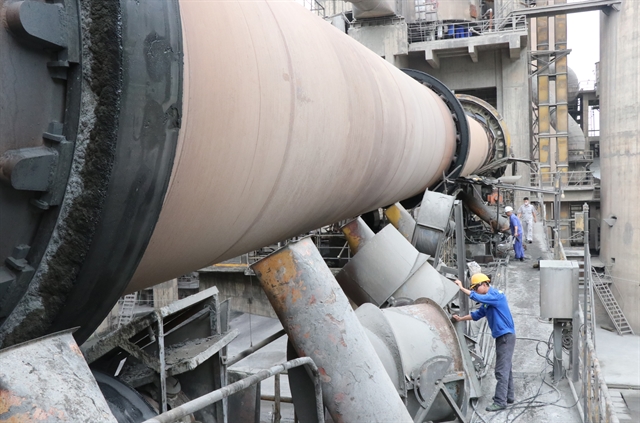 Economy
Economy

 |
| Cement production line in a factory in Thái Nguyên Province. Cement consumption has continuously declined from 2022 to date, posing numerous challenges for enterprises in the industry. — VNA/VNS Photo Hoàng Nguyên |
HÀ NỘI — The Vietnam National Cement Association (VNCA) has just submitted a proposal to the Prime Minister aimed at addressing financial and production bottlenecks faced by cement manufacturers who are at risk of bankruptcy and potential acquisition by foreign companies.
According to the VNCA's report, cement consumption has continuously declined from 2022 to date, posing numerous challenges for enterprises in the industry.
Việt Nam has 61 cement manufacturing plants with total capacity of 117 million tonnes per year but the consumption in 2023 only reached 87.8 million tonnes, including 56.6 million tonnes consumed in the local market and 31.2 million tonnes exported. This figure represented a 16 per cent drop year-on-year.
Việt Nam ranks third in the world in terms of cement output, behind China and India. The quality and production technology are also among the top producers in ASEAN, with products catering to various construction demands ranging from marine and island projects, oil and gas wells, to construction of industrial furnaces at high temperatures.
However, the industry is currently grappling with many challenges that threaten to push producers into bankruptcy and potential acquisition. The challenges include reduced domestic consumption due to sluggish implementation of public investment projects and rising cost of fuel and energy, coupled with environmental concerns which have led to increased expenses in cement production. Additionally, higher clinker export taxes have hindered the industry’s potential for expanding exports to offset the decline in domestic consumption.
In 2023, many cement plants were forced to halt production for up to half a year, while some remained idle for the entire year, VNCA reported.
To tackle difficulties for the industry, the association has proposed the Prime Minister and relevant ministries take steps to boost domestic cement usage through implementing causeway solutions in highway projects, especially in areas with weak soil and those prone to flooding, such as the Central Highlands and the Mekong Delta.
VNCA also suggests the Government consider reducing or eliminating export taxes on clinker. If not removed, the export tax on clinker should remain at 5 per cent for the next two years. Furthermore, the association recommends the Prime Minister instruct banks to restructure debts and lower interest rates for cement businesses, alongside discouraging investors from investing in cement projects in Việt Nam. — VNS




